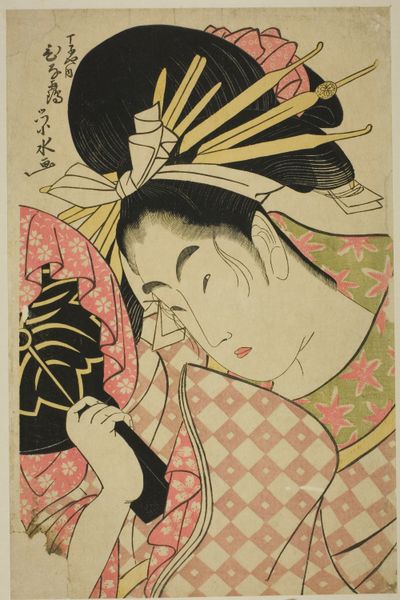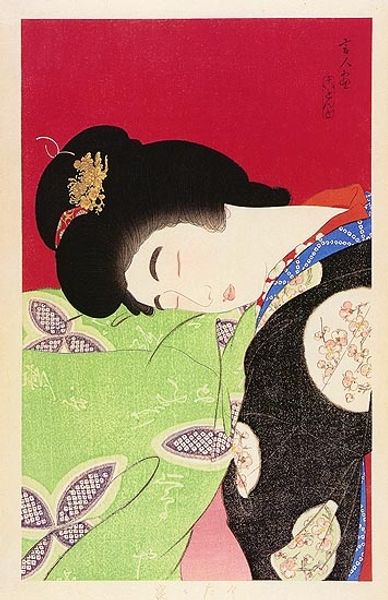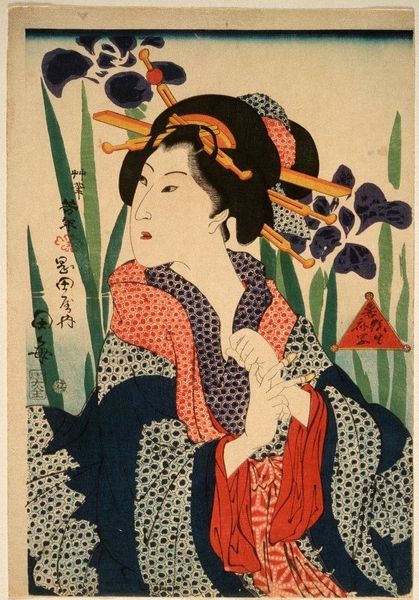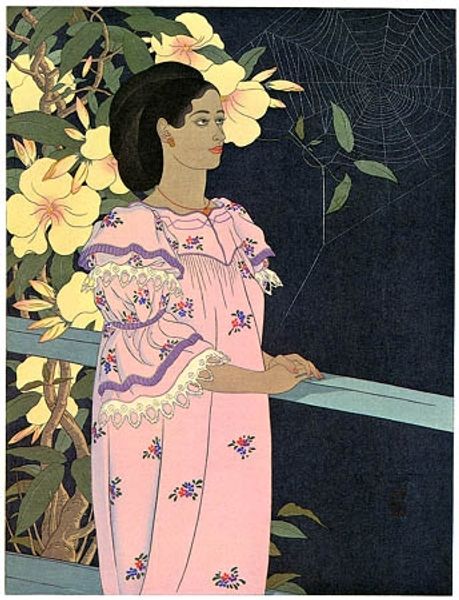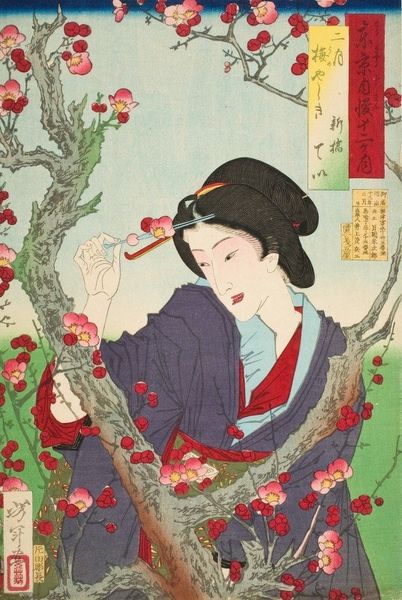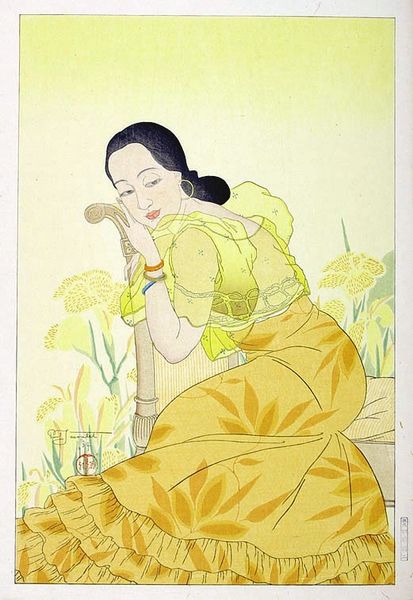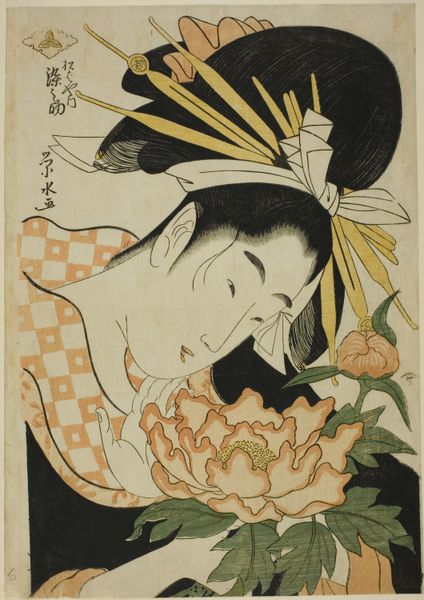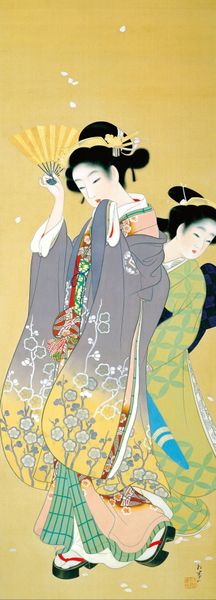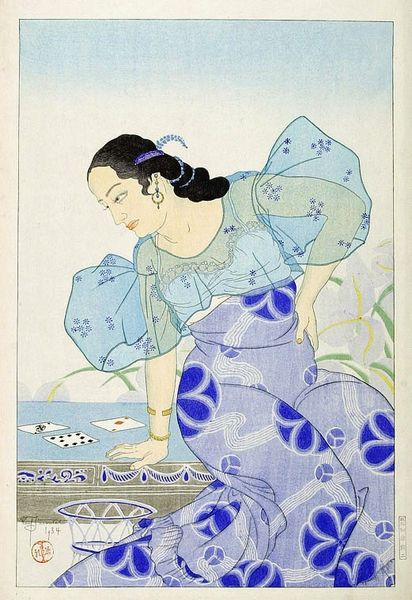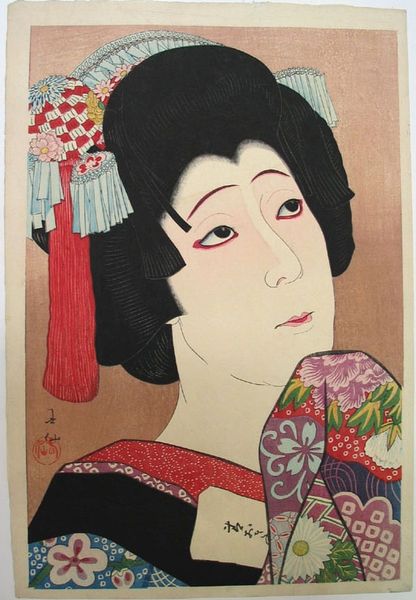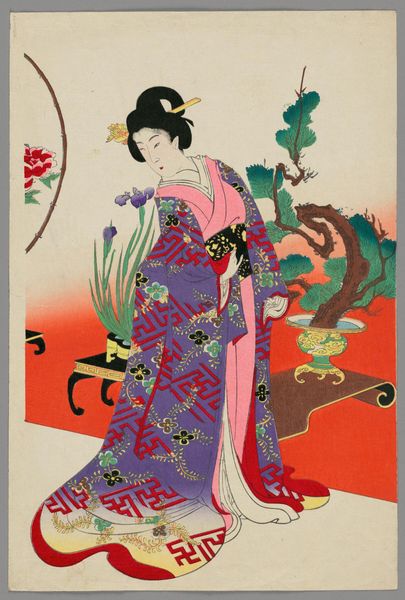
Copyright: Public domain Japan
Curator: It's fascinating to consider Paul Jacoulet's 1940 color woodblock print, “Chagrins d'Amour, Kusaie, Est Carolines.” What strikes you initially about this particular work? Editor: Well, besides the intense colors, I immediately notice the melancholic intimacy – a woman and a vibrant parrot sharing a quiet moment, almost a shared sorrow. There’s an emotional weight that contrasts with the bright, almost cheerful palette. Curator: Yes, the colors play a crucial role. The title translates to "Love's Sorrows" or "Heartaches," which hints at a narrative. But observe the symbolism - the vibrant plumage juxtaposed with her downturned gaze perhaps suggests suppressed grief, or a bittersweet memory. The bird could even represent a lost lover, don’t you think? Editor: Interesting! In terms of the larger artistic climate, this work, while aesthetically beautiful, must be understood in the context of its time. Jacoulet, a Frenchman working in Japan, reflects the wider Orientalist style gaining traction, and it reflects the complex interactions between the colonial powers, local communities, and international travel of that period. Curator: Exactly. The piece also evokes elements of ukiyo-e prints with the strong outlines and flat planes, yet subverts it with Western aesthetic. You could argue Jacoulet used an adopted culture as a canvas for universal emotion, while also imposing a Western viewpoint. This, of course, can create further political considerations of representation, Editor: It speaks volumes about the role of art in cross-cultural dialogue and the complexities inherent within representation, certainly. Were this displayed prominently during Jacoulet's life, it surely would spark different, perhaps political, feelings based on local politics. And what do you see in it, now, personally? Curator: For me, this speaks about our relationships with things held captive in one form or another, like love and wild creatures. Perhaps, also about our longing to merge with the most beautiful aspect of the wild itself. Editor: I like that – I’m struck once again by how a deceptively beautiful print can become a rich and layered commentary on culture, emotion, and political interactions. Curator: Precisely. Its initial charm belies its capacity to explore complicated, ongoing ideas.
Comments
No comments
Be the first to comment and join the conversation on the ultimate creative platform.
